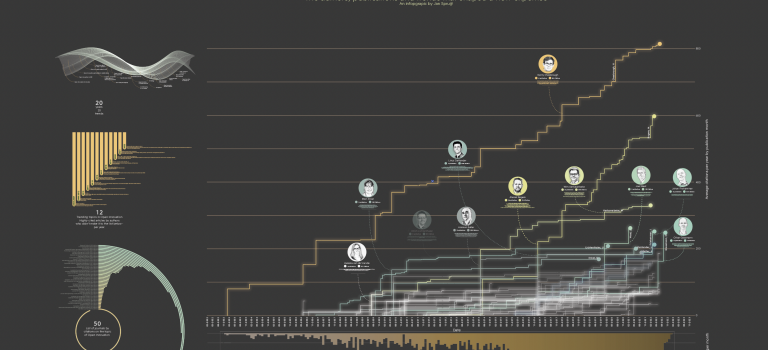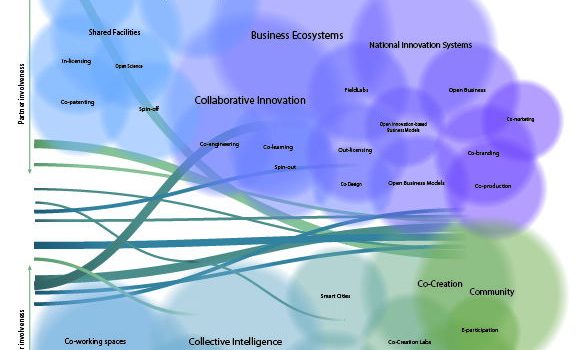Recently, the Open Innovation Research Forum – part of the University of Cambridge – released a paper that shows results of a study among almost 1200 German innovation companies. The paper provides the hypothesis that several different innovation-enabling factors would generate more revenue within companies that embrace Open Innovation than within companies that don’t.
To be precise: the authors refer to Open Innovation as the use of “search openness”, i.e. the use of external ideas and developments as an influx for internal research and development. According to research findings, almost 70% of these companies indicated they absorbed external knowledge from one or more source. Because it is near-to-impossible to gather information on all these sources, the authors focused on gathering data on the influx of ideas from 5 sources: customers, suppliers, competitors, research institutions and government.
Most importantly, they defined four “moderating factors”: factors that could distinguish organization that absorb from the above-mentioned 5 sources from those that are not. Explanation of these four can be found in this table:
| Factors distinguishing Open Innovation companies |
Characteristics used in study |
| Technology Leadership |
- Focus on Technology Leadership
- Focus on Leadership in New Product Development
- Focus on Leadership in New Process Development
- Focus on Introduction of Entirely New Technologies
|
| Incentive System |
- Use of Innovation Performance Indicators for Staff Assessment
- Use of Tangible Incentives for Innovation Managers
- Use of Intangible Incentives for Innovation Managers
- Use of Incentives for Idea Development by Staff Members
|
| Research Capacity |
- The ratio between firms’ R&D expenditures and their revenues.
|
| Cross-functional Collaboration |
- Cultivation of Informal Internal Exchange Networks
- Joint Development of Innovation Strategies
- Open Sharing of Innovation Ideas and Concepts
- Reciprocal Support with Innovation Challenges
|
Table 1: four factors that are studied.
Study:
The authors gathered information from 1170 different organization, mainly from Germany. They are based upon a larger survey of which only a certain percentage was led to useful information regarding this study. The sample group spreaded out across several sectors:

For more information about the methodology used, please see the attached document.
Results: what factors are more present in Open Innovation organizations?
The study reveiled that 3 out of 4 hypotheses showed different results for companies that act on Open Innovation compared with companies that do not act on Open Innovation.
- The Incentive System: having a high Incentive Design, companies that use Open Innovation generate much more revenue from New Products.
- Research Capacity: having more research capacity, companies that use Open Innovation generate more revenue from New Products.
- Cross-Functional Collaboration: having higher cross-functional internal collaboration, companies that use Open Innovation generate more revenue from New Products.
The study also showed that Technology Leadership, although, like the rest, is generating more revenue when more present, doesn’t show significant differences between companies that use Open Innovation and those that don’t. In other words: Open Innovation companies with great system of Technology Leadership don’t necesseraly generate more revenues from new products, then Closed Innovation companies with a great system of Technology Leadership.
This figure shows the results:

Download the paper:
Click here to download the full paper.








